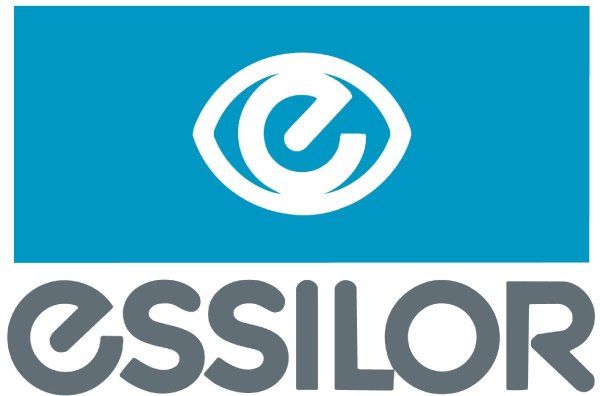The Digital Lens Difference
Urban Optiks uses superior prescription lens technology from leading lens developers such as Zeiss, Shamir & Hoya, and offers a complete range of ophthalmic lenses and coatings that meet the highest vision standards of patient care. Through the use of precision digital lenses, our expert opticians are able to provide you with the best visual experience possible.
Digital Lenses
Remember the first time you saw high-definition television? Recall how it made your old analog TV picture seem drab and blurry; colors got brighter, shapes got sharper, and everything came into focus. What if you could have the same experience with your eyeglasses?
The most important thing to remember when it comes to your eyesight is that not all lenses are created equal!
At Urban Optiks, the new standard in eyecare is to get you seeing better than 20/20. We do that by only offering the latest digital lens technology and coatings in all of our lenses. Whether you wear single-vision, multifocal or high-index lenses, our free-form digital lenses can upgrade your vision to a “high-definition” experience.
What does the term "digital" mean?
Have you heard the latest buzz about prescription lens technology? Recently, words like digital, free-form, and high-definition are being more commonly used in reference to eyeglass lenses. In a society that is growing increasingly “digital”, what does this mean in regard to eyeglasses? And ultimately, how can this technology help your vision?
The technology used to create prescription lenses has been in the process of evolution since its inception, but over the past decade, more of a revolution has been happening. New vision science has profoundly affected the way ophthalmic lenses are being designed, fit, and manufactured. In no way is this more evident than in the large increase in the availability of the aforementioned digital lenses.
When we refer to a lens as being “digital,” we are using this broad term to refer to a very advanced fitting and manufacturing process, ultimately enabling us to provide the wearer with superior vision benefits. Imagine the first time you watched a DVD versus a VHS tape; that same improvement in sharpness, color, and clarity is what this process offers. However, it involves several components that must be given special attention to arrive at the best possible outcome.
What are the benefits?
Some of the benefits you will experience with digital lenses versus traditionally-surfaced lenses are:
- Superior binocularity and peripheral optics
- Improved clarity and reduced distortion
- Sharper, crisper vision and image quality
- Increased contrast sensitivity making colors brighter and details sharper
- Wider visual field
- Smoother transitions between progressive lens zones
- Reduction in higher-order aberrations (starbursts, halos)
- Less glare at night
Due to the costs associated with research & development of new technology, production of these digitally surfaced lenses is more complex and thus more expensive to produce than traditionally surfaced lenses. However, for those patients who want the very best vision that science can currently provide, digital surfacing provides the mechanism to deliver it.
CHECK OUT THESE INFORMATIVE ARTICLES ON OUR BLOG
The Comprehensive Guide to Eyeglass Lenses
Unveiling Brilliance: A Deep Dive Into the Innovation of ZEISS Optical Lenses
Types Of Lenses
Precision Lens Measurement
Just like your fingerprint, every face, frame fit, and prescription are unique and with today’s technologies, customized solutions can be created that have been personalized to your vision and lifestyle requirements.
With your prescription and frame in hand, our highly skilled opticians will use the Zeiss iTerminal 2 to perform an advanced fitting. Using a precision digital camera and computerized measuring system, the iTerminal 2 delivers measurements to 0.1mm accuracy. Traditionally, 1mm measurement increments were the most that could be achieved. In addition, the only position of wear measurements that were available were pupillary distance and ocular height. Now, with the iTerminal 2 we are able to measure for vertex distance, pantoscopic tilt and wrap, all of which are needed for complete prescription optimization.
Lens Design & Manufacturing
Lens design drives the performance characteristics and digital surfacing delivers it. Our premium lens manufacturers, including Carl Zeiss Vision, Shamir, Hoya and Essilor, push the mathematical limits of progressive lens design to further improve patient attributes and create “virtual lenses” in the form of large mathematical data files that are used to control the surfacing process.
Traditional surfacing was once done using molds whereas, today’s digital surfacing is done directly on the lens using high-speed diamond laser cutting tools. The digital surfacing allows simultaneous control of multiple axes while cutting and polishing the lens surface. A modern free-form generator and polisher deliver the lens geometry and surface shape required within the tolerance of single microns, a precision never available before.
Lens Treatments & Coatings
Options, options, and more options! Regardless of your prescription or the frame you ultimately choose, there is a variety of lens treatments and coatings available which can enhance your visual experience and make a real difference in the health and quality of your vision. Scratch resistant treatments, anti-reflective treatments, UV protection and more are all readily available and can be combined to create the ultimate eyeglass lenses.
Photochromic lenses, commonly referred to as Transitions, are available in almost every lens design from single-vision to progressives. They come in a wide variety of lens designs and materials, including polycarbonate, trivex, and high-index.
Our Lens Manufacturing Partners
Zeiss
Your eyes. Your style. Your life. The prescription your doctor writes for you is completely personalized for your eyes. But most progressive lenses are not: they use the same optics for many prescriptions. Your ZEISS progressive lenses will be designed precisely for your prescription and manufactured with for superior performance. You’ll enjoy wide, spacious fields of clear vision – up to 50% larger* than ordinary progressives. Learn More
Shamir
Founded in 1972, Shamir Optical Industry Ltd. is one of the world’s leading manufacturers of high-quality progressive lenses. Famous for its Innovation, Technological Sophistication and rigorous Quality Assurance practices, Shamir is known for its quick response to changing consumer demands and its ability to custom-design a wide range of progressive lenses and the industry’s leading occupational lens.
Learn More
Hoya
Like fingerprints, no two eyes are the same. Hoya’s approach to your vision correction is also one-of-a-kind. Hoya combines specialized processes in optical engineering with high-tech knowledge of advanced materials to bend and manipulate light more precisely than ever before possible. Learn More
Essilor
As one of the world’s leading providers of eyeglass lenses for over 160 years, Essilor’s number one priority has always been the customer. With customers in mind, Essilor works closely with eyecare professionals to provide innovative products that fit their lifestyles.
Learn More
Partnerships That Benefit You!
Urban Optiks Optometry is proud to partner with incredible frame and lens vendors from around the world, bringing years of optical experience together to provide you the finest eyewear and eyecare available in San Diego. Here’s a video that explores our fantastic relationship with Tom Davies Bespoke and Zeiss Digital Lenses.


















